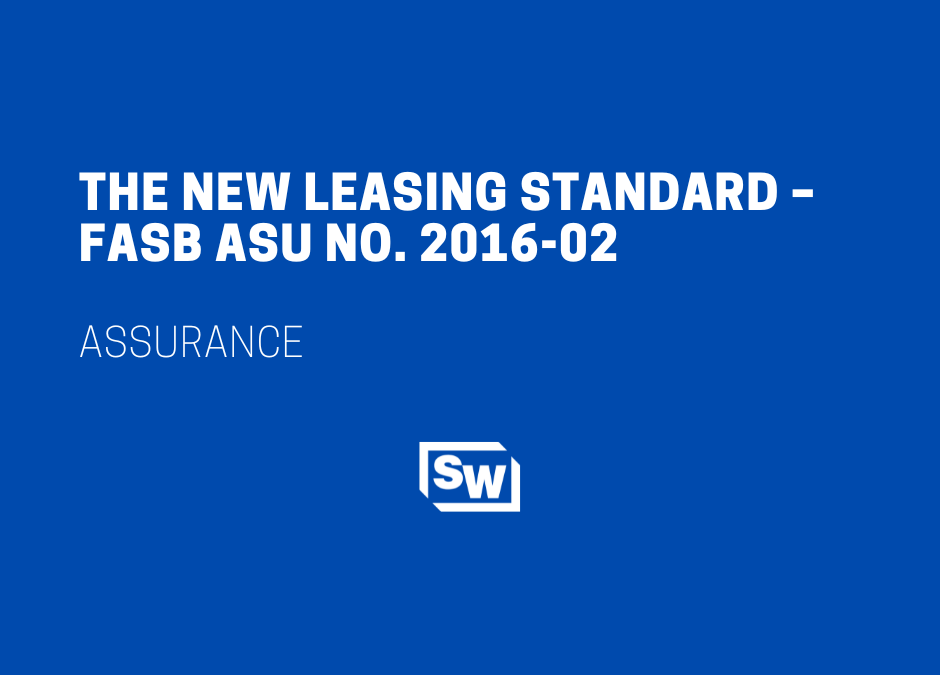The date for implementing the new leasing standard is here. Sciarabba Walker recommends that an inventory of lease agreements is completed, and the various reporting requirements for year-end are taken into consideration. The effective date of the standard had previously been extended due to the COVID-19 pandemic. However, another extension has not been granted, and the standard will therefore be applicable for most organizations in calendar year 2022. Officially, the standard is effective for fiscal years beginning after December 15, 2021, and interim periods within fiscal years beginning after December 15, 2022, for non-public business entities.
The ASU requires the change be made retroactively, so lessees are required to change the accounting for all current leases, even those entered into before the implementation of ASU 2016-02. The new rules apply to all types of leases—even the simplest of office space or equipment leases.
The core principle of the guidance is that a lessee should recognize the assets and liabilities that arise from all leases of 12 months or more. Previously, there were capital leases that were recorded in this way, but operating leases were expensed and not required to be reported on the balance sheet or statement of financial position. Now, all leases, whether capital or operating, will be recognized on the organization’s financial statements.
For finance leases (previously capital leases), a lessee is required to do the following:
- Recognize a right-of-use asset and a lease liability, initially measured at the present value of the lease payments, on the balance sheet or statement of financial position.
- Recognize interest on the lease liability separately from amortization of the right-of-use asset on the income statement or statement of activities.
- Classify repayments of the principal portion of the lease liability within financing activities and payments of interest on the lease liability, and variable lease payments within operating activities on the statement of cash flows.
For operating leases, a lessee is required to do the following:
- Recognize a right-of-use asset and a lease liability, initially measured at the present value of the lease payments, on the balance sheet or statement of financial position.
- Recognize a single lease cost calculated so that the cost of the lease is allocated over the lease term on a generally straight-line basis.
An example is included below with the following conditions for both finance and operating leases: All lease payments are made in arrears – specifically $77,000 at the end of Year 1, $100,000 at the end of Year 2, and $150,000 at the end of Year 3. The appropriate discount rate for both examples is 4.50%, meaning the present value for both sets of lease payments is about $300,000. Finally, the lessee expects to benefit from the right to use (ROU) the leased asset evenly over the lease term.
| Finance Lease | Operating Lease |
| LEASE COMMENCMENT
ROU asset $300,000 Lease liability $300,000 |
LEASE COMMENCMENT
ROU asset $300,000 Lease liability $300,000 |
| YEAR ONE ENTRY
Interest expense $13,500 Lease liability $13,500 Amortization expense $100,000 ROU asset $100,000 Lease liability $77,000 Cash $77,000 |
YEAR ONE ENTRY
Lease Expense $109,000 Lease liability $63,500 ROU asset $95,500 Cash $77,000 |
| YEAR TWO ENTRY
Interest expense $10,643 Lease liability $10,643 Amortization expense $100,000 ROU asset $100,000 Lease liability $100,000 Cash $100,000 |
YEAR TWO ENTRY
Lease Expense $109,000 Lease liability $89,358 ROU asset $98,358 Cash $100,000 |
| YEAR THREE ENTRY
Interest expense $6,621 Lease liability $6,621 Amortization expense $100,000 ROU asset $100,000 Lease liability $150,000 Cash $150,000 |
YEAR THREE ENTRY
Lease Expense $109,000 Lease liability $143,379 ROU asset $102,379 Cash $150,000 |
Overall, the updated regulations now require that all leases be reported on the organization’s financial statements. At this time, management should have an inventory of all leases, pay special attention to debt covenants, and begin calculating any adjustments that will be required as part of the 2022 reporting.
If you would like more information on how these changes affect your organization or on how to determine the proper entries and reporting, please reach out to your personal Sciarabba Walker contact or email info@swcllp.com.
By Elyse McMillen, CPA

